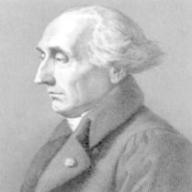I=nQAv
2011-12-21 12:14 pm
When the voltage applied across a circuit is increased but the current flowing in the circuit remains unchanged, the drift velocity of free electrons in the circuit is increased due to a higher potential causing free electrons to a higher acceleration. However, according to the equation I=nQAv, current I is directly proportional to the product of the cross-sectional area of the metal wire and the drift velocity of free electrons (since n and Q are constant), thus it is impossible for only drift velocity of free electrons being increased but no change in the current. The only explanation is that if a higher potential difference is applied across a circuit and keeping the same current in it, it is necessary to lower the temperature of the circuit so as to reduce the cross-sectional area of the wire. But this act also decreases the resistance of the wire, thus the current must be increased. I am now being caught in a dilemma. Would anyone likes to solve my problem?
回答 (1)
2011-12-21 5:20 pm
✔ 最佳答案
For a simple conductor, you can't increase the voltage but keeping the current constant, as this violates Ohm's Law.The equation I = nQvA applies to a simple conductor, which obeys Ohm's law. Using I = V/R, where V is the applied voltage and R is the resistanc eof the simple conductor, then
V/R = nQvA
but R = pL/A (where p is the resistivity of the conductor material, L is the length of conductor and A its cross-sectional area)
V = (nQvA).(pL/A)
i.e. V = nQvpL
Any increase in applied voltage V will bring to an increase of drift velocity v.
收錄日期: 2021-04-29 17:48:34
原文連結 [永久失效]:
https://hk.answers.yahoo.com/question/index?qid=20111221000051KK00105

